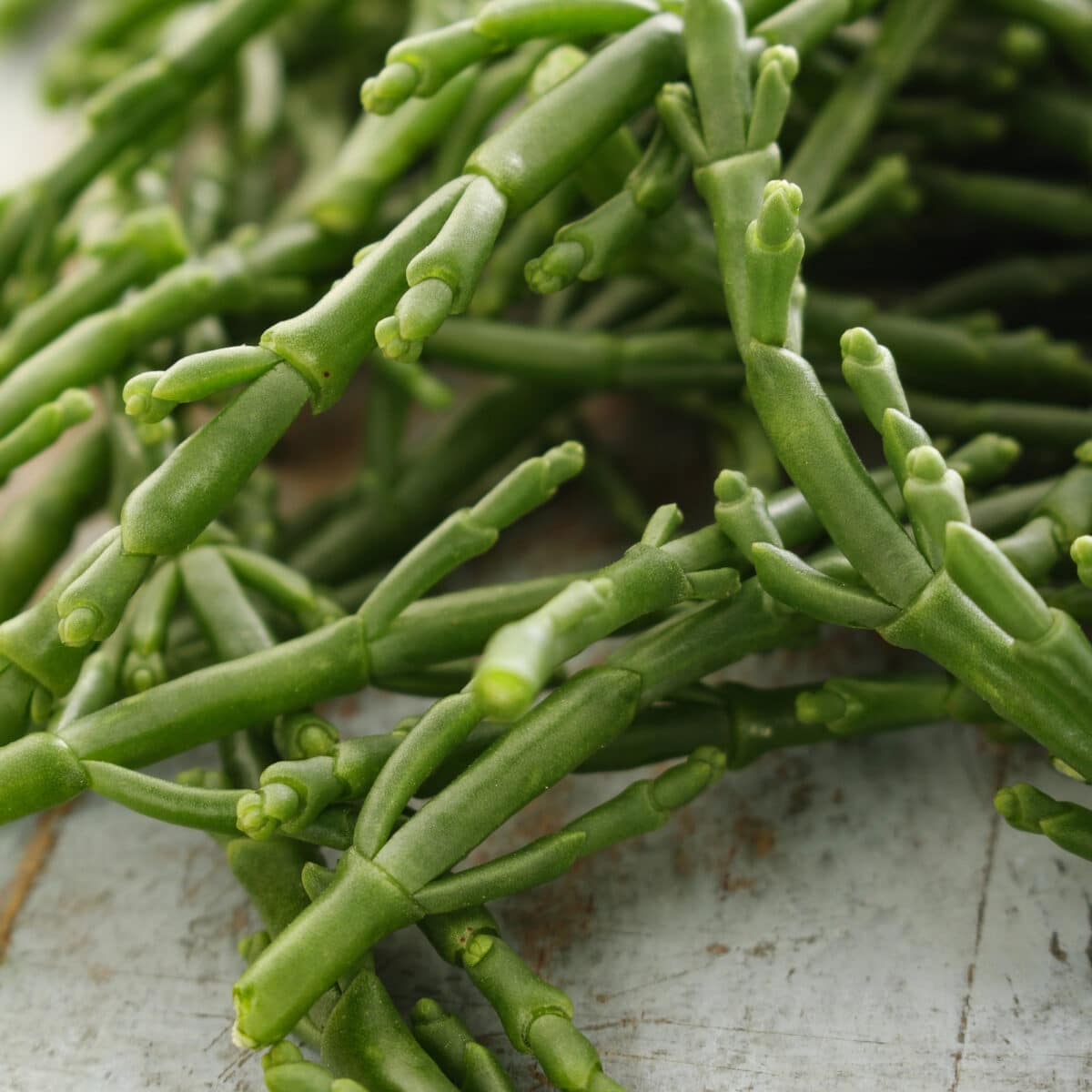Samphire, also known as sea beans, is found in a variety of coastal locations both in the United States and around the world, making it a noteworthy component in various regional cuisines. Along the coasts of the United States, such as those of Cape Cod, samphire can be spotted in environments like the salty marshes and tidal shores of the Pacific Northwest, including parts of California and Oregon. It’s less commonly known in the inland and southern states, where coastal marshlands are less prevalent.
Other names for Samphire are glasswort, salicornia, marsh samphire, sea asparagus, pickleweed, or saltwort.
Where is it eaten?
Globally, samphire enjoys popularity in several countries. In the UK, for instance, it is a summer favorite, especially in coastal regions like Norfolk and Cornwall where it is often harvested from local salt marshes. In Europe, countries like France and Spain incorporate samphire into salads and seafood dishes, appreciating its crisp texture and salty flavor. The French refer to it as “salicorne” and use it in various traditional dishes, while in Australia, samphire is beginning to grace both restaurant menus and home meals, especially in coastal areas.
What does it taste like?
Samphire has a distinct flavor profile and texture that makes it quite unique, though its taste has been compared to asparagus due to its similar crunchy and slightly tender consistency when cooked. Its natural saltiness also brings hints of seaweed or spinach when eaten raw or lightly cooked, allowing it to be a substitute in recipes calling for these ingredients, especially where a saline accent is desired.
For vegetarians, umami-rich Samphire can even replace ham in recipes.
How is it prepared?
Culinary uses of samphire include serving it raw in salads for a fresh, crunchy, and salty addition or cooking it briefly by steaming or sautéing in olive oil. Its flavor, which carries the essence of the ocean, pairs well with seafood, making it an excellent garnish or side dish. For example, in the UK, “samphire with butter and garlic” is a popular dish where the greens are lightly sautéed to emphasize their natural crispness and briny flavor. Another classic is “samphire and shrimp linguine,” which pairs the vegetable with seafood, enhancing the oceanic taste of both components. Additionally, a “samphire salad with olives and feta” is common in coastal Mediterranean cuisine, combining the crunchy green with robust flavors of the region.
Is it healthy?
Nutritionally, samphire offers vitamins A, C, and B2, along with essential minerals like potassium and calcium, promoting bone health and enhancing immune function. However, those monitoring their sodium intake might need to enjoy it in moderation due to its natural salt content. Despite its distinct qualities and health benefits, samphire remains somewhat of an under-the-radar green in many parts of the world, often cherished most by coastal communities and culinary enthusiasts. Its ability to blend well with other flavors while adding a distinctive salty crunch makes it a terrific addition to a wide range of dishes, from simple sautés to more complex seafood preparations.
What does the name mean?
The name “samphire” originates from the French term “sampiere,” which is a contraction of “Saint Pierre,” the patron saint of fishermen. This name highlights the plant’s association with coastal and marine environments, where it often grows in rocky, saline conditions near the sea. The link to Saint Pierre (St. Peter) reflects the plant’s significance to coastal communities, particularly those whose livelihoods depended on fishing. Over time, “sampiere” evolved into the English “samphire.” This etymology underlines the historical and cultural connections of the plant with maritime regions.

